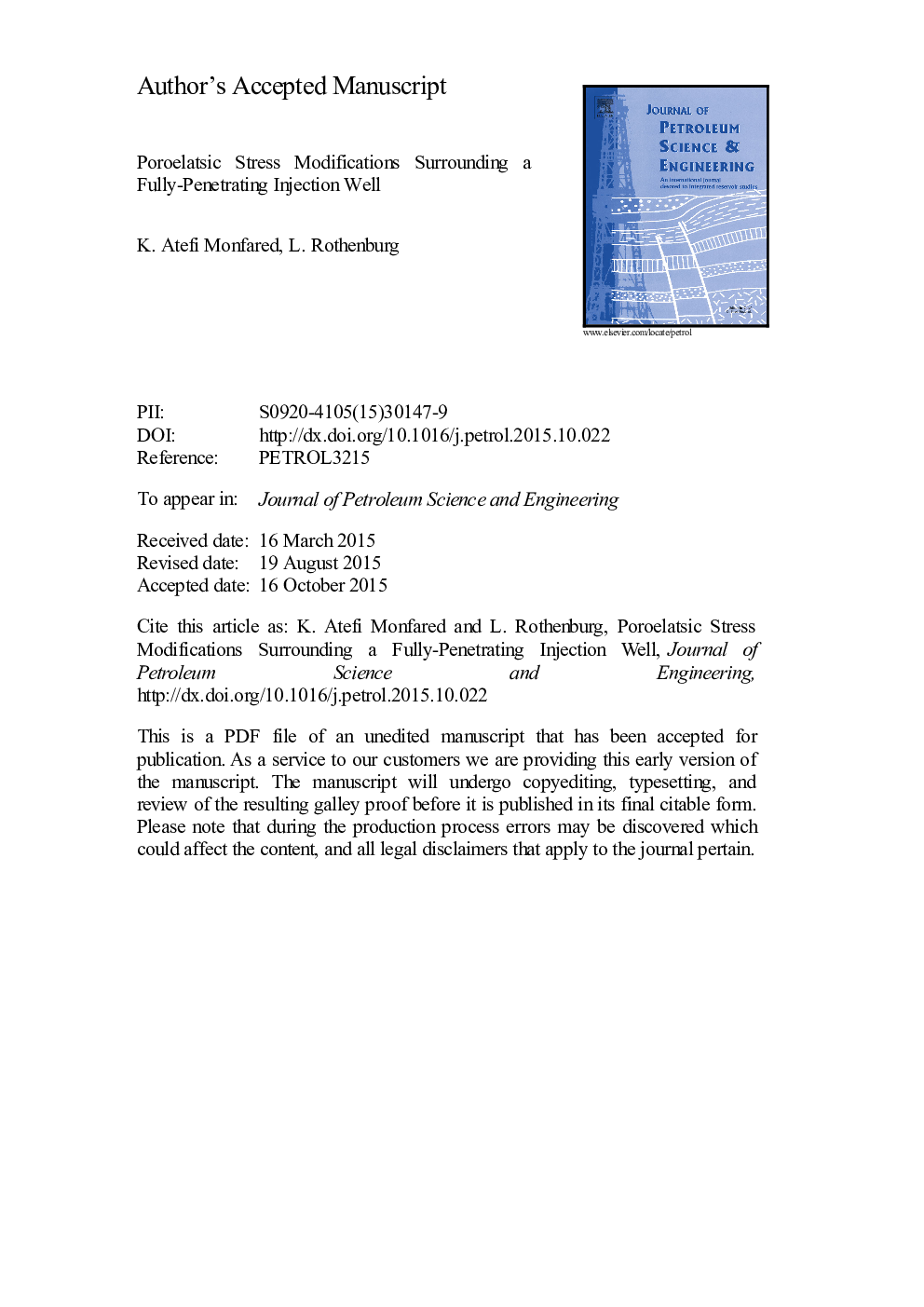| Article ID | Journal | Published Year | Pages | File Type |
|---|---|---|---|---|
| 8126516 | Journal of Petroleum Science and Engineering | 2015 | 44 Pages |
Abstract
The poroelastic response of a confined porous layer is found to be independent of seal rock stiffness in lower permeabilities (<0.05Â Darcy). However, in unconsolidated hydrocarbon reservoirs where permeability is typically higher, seal rock stiffness is proven to have a notable impact on the near-wellbore geomechanical response during injection. It is the ratio of the overburden stiffness parameter to reservoir's bulk modulus that dictates the geomechanical response of the injection layer: once the ratio approaches unity, practically no shear stress is induced; for ratios exceeding unity, deviatoric stresses gradually increase; and in case of ratios bellow unity, reservoir formation can behave in a complicated manner depending on the initial stress regime, where reorientation of the minimum principal stress occurs from horizontal to vertical plane. Fracture reorientation is concluded to be a result of an increase in reservoir's bulk modulus during prolonged injection cycles. Sensitivity analyses reveal an enhanced state of limiting shear resistance in case of: higher anisotropy, higher elastic moduli, lower permeability, and a higher degree of soil-fluid coupling.
Keywords
Related Topics
Physical Sciences and Engineering
Earth and Planetary Sciences
Economic Geology
Authors
K. Atefi Monfared, L. Rothenburg,
